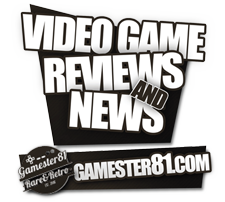Console: Master System
Manufacturer: SEGA
Availability: June 1986 (North America)
Cost: $200 ($432.21 including inflation)
History:
The Sega Master System (also known as simply the SMS) was released in North America in June of 1986, and was first available in Japan in October of 1985 as the Sega Mark III. The SMS is an 8bit console, released in the third video game generation and was a direct competitor to the popular Nintendo Entertainment System (NES). Though the NES sold better in North America and in Japan as the Famicom, the SMS outsold the NES in other markets including Brazil, Europe and in the Oceanic markets. In total Sega sold 10-13 million SMS.
In Japan, Sega released the Mark III as a successor to the Sega SG-1000 line of home consoles. The Mark III was released in October of 1985 and retailed for ¥15,000 Yen ($149 USD). Games for the Mark III came in two different versions; ROM cartridges and “Sega Game Cards”. The game cards could hold 256 kilobytes of data while the cartridges could hold four times that amount. The benefit to the cards were that they were less expensive to manufacture but they didn’t sell as well.
Hideki Sato who designed both the SG-1000 line of home consoles and the Mark III redesigned the Mark III for the North American markets. It was released to compete with the very successful Nintendo Entertainment System and retailed for $200. The SMS in addition to the game card slot and cartridge slot, also included either Snail Maze or Hang On/Safari Hunt as built in games. By 1988 Nintendo had a commanding 83% of the market share and Sega didn’t want to risk challenging Nintendo directly so Sega contracted through Tonka to market the SMS in North America. Tonka who had experience in marketing toys had no experience marketing a video game console which lead to poor marketing and sales for the SMS. In addition Nintendo had a non-compete policy for their third party developers that stated that they could not publish their games for a competing system. Only two third-party developers, Activision and Parker Bros released games for the SMS, and by 1989 both companies withdrew support for the SMS. Neither of them released more than five games for SMS.
In 1989 Sega was getting ready to release the 16-bit Sega Genesis system and had been displeased with how Tonka had handled the SMS. Sega decided to take back the rights for the system and had redesigned the SMS as the Sega Master System II. The SMS II lacked the game card slot and included either Alex Kidd in Miracle World or, later, Sonic the Hedgehog as a built in game. Sega had invested a lot of money to try to revive the SMS sales, but unfortunately it didn’t help much. Nintendo was eventually found guilty of violating the United States antitrust law and was forced to give up some licenses policies. It was too little too late for the SMS, and in total 2 million system were sold in North America.
In contrast, the SMS thrived in Europe selling 6.25 million systems. It had strong third-party support, and by 1993, Sega had more SMS systems in the European market than Sega Mega Drive systems.
By far the strongest market for the SMS was Brazil. The SMS was distributed by Tectoy in Brazil, and the system was supported well through the 2000’s. The SMS in Brazil saw many popular titles including Phantasy Star translated into Portuguese, and many exclusive titles, including Street Fighter II, were only released in the Brazilian market. In total 5 million SMS were sold in Brazil. There are many unique versions of the SMS released only in Brazil including the Master System 3 (which included 131 built in games) and the Master System Girl (which was marketed for the female audience).
Controller:
The SMS controller is similar in design to the NES controller. There is a direction pad and two action buttons; 1 & 2. There is no select button, and the pause button is located on the SMS system itself.
Peripherals:
There were a number of different peripherals released for the SMS. Some of the more known ones include the Light Phaser and 3D Glasses. The Light Phaser was modeled after the Zillion gun from the Japanese anime series Zillion. The Light Phaser resembled the look of a real gun so much so that in some cases local authorities had to be educated to know the difference. There were thirteen games released for the Light Phaser.
Another peripheral released for the SMS was the SegaScope 3D Glasses. The LCD shutter glasses would rapidly alternate between the left and right eyes which would in turn cause a 3D effect. Only eight games were released for the 3D Glasses, and because the glasses plug into the game card slot, it is not compatible with the SMS II systems.
Fun Facts:
- The SMS is very similar when it comes to graphics and sound to the Sega Game Gear. In fact many games that were released for the SMS in other countries were ported to the North American Sega Game Gear line.
- Before Sonic the Hedgehog, Sega had Alex Kidd as their mascot.
For additional History of Console reviews: Click Here
Join the new Gamester81 forums: http://dev2017.gamester81.com/forum









